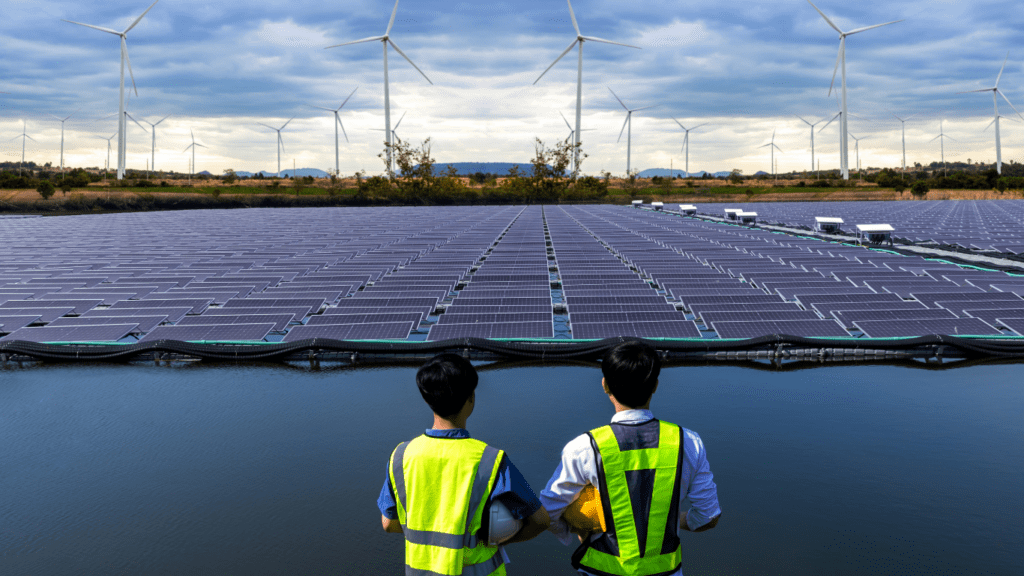Overview of Innovative Green Technologies
Innovative green technologies are revolutionizing how we interact with our environment. They’re transforming industries, enhancing sustainability, and reshaping our future.
Impact on Sustainable Development
These technologies greatly impact sustainable development. Solar panels and wind turbines now provide renewable energy to millions of homes, reducing reliance on fossil fuels. For example, countries like Germany generate over 40% of their energy from renewables.
Smart grids enhance energy efficiency by balancing supply and demand in real time. Waste-to-energy plants convert municipal waste into usable electricity, helping cities like Stockholm manage waste sustainably.
Sustainable agriculture practices, such as precision farming, minimize resource use while maximizing crop yields. Vertical farming in urban areas reduces land use and shortens supply chains.
Comparison With Traditional Technologies
Green technologies often outperform traditional ones in efficiency and environmental impact. Solar energy reduces carbon emissions by avoiding fossil fuel combustion, while coal and natural gas plants emit significant greenhouse gases.
Wind turbines generate power without water, compared to nuclear plants that consume large volumes for cooling.
Electric vehicles (EVs) surpass internal combustion engine vehicles in energy efficiency and emissions reduction. EVs convert over 77% of electrical energy to power at the wheels, whereas gasoline vehicles only convert about 12%-30%.
Green building materials lower energy consumption and improve air quality compared to conventional materials. Materials like:
- recycled steel
- bamboo
have lower carbon footprints than concrete and asbestos.
Key Sectors Transformed by Green Technologies
Green technologies transform various sectors by enhancing efficiency and sustainability.
Energy Production
Renewable energy sources, like solar and wind, lead the transition from fossil fuels. Solar panels harness the sun’s energy directly, providing sustainable power for homes and industries.
Wind turbines generate electricity by converting kinetic wind energy. Smart grids optimize electricity distribution, reducing losses and improving reliability. According to the International Energy Agency, global renewable power capacity is set to expand by 50% between 2019 and 2024.
Waste Management and Recycling
Innovative technologies in waste management offer sustainable solutions. Waste-to-energy plants convert non-recyclable waste into useful energy, reducing landfill use.
Advanced recycling processes, such as chemical recycling, break down plastics into their original monomers for reuse. Automated sorting systems improve recycling efficiency.
The Environmental Protection Agency reports that the US diverted 69 million tons of waste from landfills through recycling and composting in 2018.
Transportation and Electric Vehicles
Electric vehicles (EVs) represent a significant shift in transportation. Unlike internal combustion engine vehicles, EVs produce zero emissions during operation.
Battery technology advancements extend range and reduce charging times. Charging infrastructure developments support widespread EV adoption.
The International Council on Clean Transportation highlights that EV sales doubled globally from 2020 to 2021, indicating growing consumer and regulatory support for cleaner transportation.
By integrating green technologies, these key sectors not only mitigate environmental impact but also promote sustainable growth.
Case Studies of Successful Green Technology Implementations
I’ll explore real-world examples of how green technologies are making a difference. Focusing on solar power innovations and biodegradable materials, these case studies demonstrate the practical applications of these technologies.
Solar Power Innovations

Solar power stands out for its ability to provide renewable energy. In the US, the Nellis Solar Power Plant in Nevada delivers 14 megawatts of power to Nellis Air Force Base.
This project saves the base an estimated $1 million annually on energy costs, while reducing carbon emissions. Another notable example is the SolarCity project in California, where over 200 schools benefit from solar installations, resulting in significant cost savings and reduced carbon footprints.
In India, the Kamuthi Solar Power Project in Tamil Nadu is noteworthy. This facility generates 648 megawatts, enough to power 150,000 homes.
By using robotic systems for cleaning panels, the plant maintains efficiency with minimal water usage, showcasing both innovation and sustainability.
Innovations in Biodegradable Materials
Biodegradable materials present a sustainable alternative to traditional plastics. The company Novamont, based in Italy, developed a product called Mater-Bi.
It’s a biodegradable plastic made from corn starch, which decomposes within a few weeks. This material is used in various products, including shopping bags and agricultural mulch films.
In the packaging industry, Ecovative Design is making strides with its mushroom-based packaging. This biodegradable packaging replaces Styrofoam, a material that takes centuries to decompose.
Ecovative’s materials break down in just a few months, offering a significant reduction in environmental impact.
These case studies underscore how innovative green technologies are currently applied to address both energy and waste challenges, promoting a sustainable future.
Challenges and Future Prospects
Innovative green technologies face various challenges but also hold immense potential for future development.
Technological and Financial Barriers
Adopting green technologies often encounters significant technological and financial barriers. Currently, high initial costs of implementation deter many organizations.
For example, setting up solar power plants requires substantial capital investment, making it less accessible for small businesses. Moreover, many green technologies, like advanced biofuels and hydrogen fuel cells, face technical limitations in efficiency and scalability.
Financial incentives, although crucial, are inconsistent across regions. Countries with supportive policies like subsidies and tax incentives see higher adoption rates. However, areas without these benefits lag, creating a global imbalance.
Future Trends in Green Technology
Future trends in green technology promise transformative changes.
- Renewables like solar and wind are projected to see substantial advancements. Examples include improvements in solar panel efficiency and energy storage systems that could revolutionize energy grids.
- Technological integration will play a key role. Smart grids and IoT-based energy management systems will optimize consumption and reduce waste.
- Sustainable agriculture technologies, such as precision farming and vertical farming, will enhance food production efficiency while minimizing environmental impact.
- Advances in materials science will introduce biodegradable alternatives to traditional plastics.
- Innovations like bioplastics and recyclable composites will reduce pollution and reliance on fossil fuels.
 Heather Smithkers - Innovative Eco-Author at Green Commerce Haven
Heather Smithkers is a creative and forward-thinking author at Green Commerce Haven, where she brings a unique perspective to the world of sustainability. With a flair for storytelling and a deep commitment to environmental advocacy, Heather crafts engaging content that resonates with eco-conscious readers. Her work delves into the latest trends in green startups, organic products, and sustainable living, offering fresh insights and practical advice. Heather’s innovative approach to writing helps demystify complex environmental topics, making them accessible and inspiring to a broad audience.
Heather Smithkers - Innovative Eco-Author at Green Commerce Haven
Heather Smithkers is a creative and forward-thinking author at Green Commerce Haven, where she brings a unique perspective to the world of sustainability. With a flair for storytelling and a deep commitment to environmental advocacy, Heather crafts engaging content that resonates with eco-conscious readers. Her work delves into the latest trends in green startups, organic products, and sustainable living, offering fresh insights and practical advice. Heather’s innovative approach to writing helps demystify complex environmental topics, making them accessible and inspiring to a broad audience.
